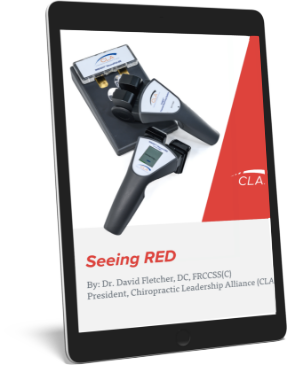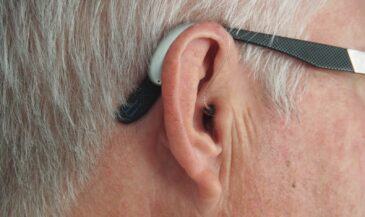By Dr. Christopher Kent
In the last few years, a growing number of scientists have become interested in the role of the nervous system in modulating immune system function. To doctors of chiropractic, the field of neuroimmunology is rich with clinical promise. This column will present a brief review, and discuss the clinical implications of this work. A growing number of investigators are exploring the common denominators in disease processes, and the role of the nervous, immune, and endocrine systems in pathogenesis.
Physiologist I.M. Korr proposed that spinal “lesions” (analogous to the vertebral subluxation complex) are associated with exaggerated sympathetic activity. It is interesting that Korr, like D.D. Palmer, employed the term “tone” in reference to ambient nervous system activity. According to Korr, “High sympathetic tone may alter organ and tissue responses to hormones, infectious agents, and blood components.”[1]
More recently, other authors have explored the relationship of sympathetic activity to immune system function in greater depth.
Murray et al examined the effect of sympathetic stimulation on the immune system. Sympathetic stimulation was induced in human volunteers by exhaustive exercise. They found that acute sympathetic stimulation leads to selective release of immunoregulatory cells into the circulation, with subsequent alterations in cellular immune function.
These authors stated, “Growing evidence suggests that immune function is regulated in part by the sympathetic nervous system. Sympathetic nerve endings densely innervate lymphoid tissue such as the spleen, lymph nodes and thymus, and lymphoid cells have beta 2 andregenergic receptors.”
In their experiments, there was a sharp rise in T suppressor/cytotoxic cells and natural killer cells following sympathetic stimulation. However, only modest rises were seen in T helper and B cells. The cells most affected, the T suppressor/cytotoxic cells and the natural killer cells, are those with the largest density of beta receptors.”[2]
Felten et al reported that the neurotransmitter norepinephrine is present in postganglionic sympathetic fibers which innervate lymphoid organs and act on the spleen. Furthermore, there are available receptors on cells in the white pulp and the localized neurotransmitter terminal which directly contact T lymphocytes in the periarticular lymphatic sheath.
The authors propose that norepinephrine in lymphoid organs fulfills the criteria for neurotransmission, and plays a significant role in the modulation of immune responses.
They state, “Stressful conditions lead to altered measures of immune function, and altered susceptibility to a variety of diseases. Many stimuli, which primarily act on the central nervous system, can profoundly alter immune responses. The two routes available to the central nervous system for communication with peripheral organs are neuroendocrine channels and autonomic nerve channels.”[3]
In a more recent paper, Felten’s team reviewed aspects of neural-immune signaling.
“Noradrenergic and peptidergic nerve fibers abundantly innervate the parenchyma of both primary (bone marrow) and secondary (spleen, lymph nodes) lymphoid organs. Nerve fibers distribute within the parenchyma of these organs, as well as along smooth muscle compartments. Both noradrenaline and peptides such as substance P have been shown to fulfill the basic criteria for neurotransmission with lymphocytes, macrophages, and other immunocytes as targets. Denervation or pharmacological manipulation of these neurotransmitters can profoundly alter immunological reactivity at the individual cellular level, at the level of complex multicellular interactions (such as antibody response), and at the level of host responses to a disease-producing challenge.”[4]
The relationship between the nervous system and the immune system has attracted the attention of the popular press. An article in The New York Times stated, “Scientists have found the first evidence of an anatomical connection between the nervous system and the immune system. Nerve cell endings in the skin and white blood cells of the immune system are in intimate contact, and chemicals secreted by the nerves can shut down immune system cells nearby.”[5] The New York Times author was describing the findings of a paper written by Hossi et al.[6]
Inflammatory disease is influenced by the nervous system. Undem noted that nerve stimulation can affect the growth and function of inflammatory cells.[7]
Sternberg et al stated, “The central nervous system may coordinate both behavioral and immunologic adaptation during stressful situations. The pathophysiologic perturbation of this feedback loop, through various mechanisms, results in the development of inflammatory syndromes, such as rheumatoid arthritis, and behavioral syndromes, such as depression. Thus, diseases characterized by both inflammatory and emotional disturbances may derive from common alteration in specific central nervous system pathways.”[8]
Fricchoine and Stefano also reviewed what they termed the”neuroendocrine-neuroimmune stress response system.”[9]
Central nervous system influences on lymphocyte migration was addressed by Ottaway and Husband. These authors suggested that “Many of the alterations in immunity resulting from CNS activity may be explained in terms of changes in lymphocyte migration patterns in response to endocrine signals, neural signals via neurotransmitter release, or direct contacts between nerves and cells of the immune system.”[10]
Weihe and Krekel observed that “Peptides, being presenting small-diameter nerve fibers, could exert an indirect immunoregulatory role by influencing vascular tone and/or permeability.”[11]
A very interesting hypothesis proposed by Grossman et al is that cells can learn to associate responsiveness to antigens and other immunoactive agents, with responsiveness to signals originating in the CNS delivered via neuroendocrine or autonomic nervous channels. They propose storage (memory) of stimuli in the immune system rather than in the brain.[12]
Just what does this mean to the chiropractor? Can spinal adjustments alter immune system activity?
Brennan et al found that when a thoracic “manipulation” was applied, the response of polymorphonuclear neutrophils isolated from blood collected 15 minutes after the manipulation was significantly higher than blood collected 15 minutes before and 30 and 45 minutes after manipulation. A slight, but significant rise in substance P was also observed.[13]
What are the clinical implications of the nervous system–immune system link? A small controlled study of HIV positive patients was conducted by Selano et al. The effects of specific upper cervical adjustments on the immune system CD4 cell counts of HIV positive individuals was studied. Half the patients received atlas adjustments based upon Grostic upper cervical analysis. The other half received a placebo in the form of an inactive adjusting instrument applied to the mastoid bone. Over the six month period of the study, the control group experienced a 7.96% decrease in CD4 cell counts, while the adjusted group experienced a 48% increase in CD4 cell counts over the same period.[14]
Contemporary research is beginning to shed light on the neurobiological mechanisms which may explain the outstanding clinical results chiropractors have experienced when managing patients with infectious diseases. The popular press has been filled with stories describing the emergence of antibiotic resistant pathogens, and the futility of the long term strategy of developing new, stronger antibiotics.[15,16]
As author Geoffrey Cowley observed, “Drug resistant microbes don’t threaten us all equally. A healthy immune system easily repels most bacterial invaders, regardless of their susceptibility to drugs.”[17]
Maintaining a healthy immune system depends upon maintaining a healthy nervous system. Are you ready to accept the challenge and the opportunity?
References
1. Korr IM: “Andrew Taylor Still memorial lecture: research and practice — a century later.” J Am Osteopath Assoc 1974 73:362.
2. Murray DR, Irwin M, Reardon CA, et al: “Sympathetic and immune interactions during dynamic exercise. Mediation via a beta 2 – adrenergic-dependent mechanism.” Circulation 1992 86(1):203.
3. Felten DL, Felten SY, Bellinger DL, et al: “Noradrenergic sympathetic neural interactions with the immune system: structure and function.” Immunol Rev 1987 100:225.
4. Felten DL, Felten SY, Bellinger DL, Madden KS: “Fundamental aspects of neural-immune signaling.” Psychother Psychosom 1993 60(1):46.
5. Kolata G: “Nerve cells tied to immune system.” The New York Times May 13, 1993.
6. Hosoi J, Murphy GF, Egan CL et al: “Regulation of Langerhans cell function by nerves containing calcination gene-related peptide.” Nature 1993 363(6425):159.
7. Undem BJ: “Neural-immunologic interactions in asthma.” Hosp Pract (Off Ed) 1994 29(2):59.
8. Sternberg EM, Chrousos GP, Wilder RL, Gold PW: “The stress response and the regulation of inflammatory disease.” Ann Intern Med 1992 117(10):854.
9. Fricchoine GL, Stefano GB: “The stress response and autoimmunoregulation.” Adv Neuroimmunol 1994 4(1):13.
10. Ottaway CA, Husband AJ: “Central nervous system influences on lymphocyte migration.” Brain Behav Immun 1992 6(2):97.
11. Weihe E, Krekel J: “The neuroimmune connection in human tonsils.” Brain Behav Immun 1991 5(1):41.
12. Grossman Z, Heberman RB, Livnat S: “Neural modulation of immunity: conditioning phenomena and the adaptability of lymphoid cells.” Int J Neurosci 1992 64(1-4):275.
13. Brennan PC, Triano JJ, McGregor M, et al: “Enhanced neutrophil respiratory burst as a biological marker for manipulation forces: duration of the effect and association with substance P and tumor necrosis factor.” JMPT 1992 15(2):83.
14. Selano JL, Hightower BC, Pfleger B, et al: “The effects of specific upper cervical adjustments on the CD4 counts of HIV positive patients.” Chiropractic Research Journal 1994 3(1):32.
15. “The end of antibiotics.” Newsweek. March 28, 1994.
16. “Revenge of the killer microbes. Time. September 12, 1994.
17. Cowley G: “Too much of a good thing.” Newsweek. March 28, 1994






























































































































































